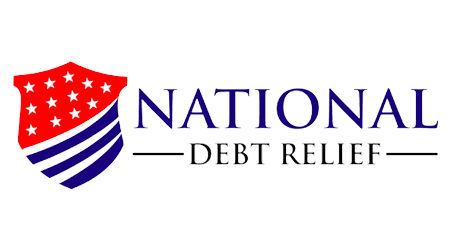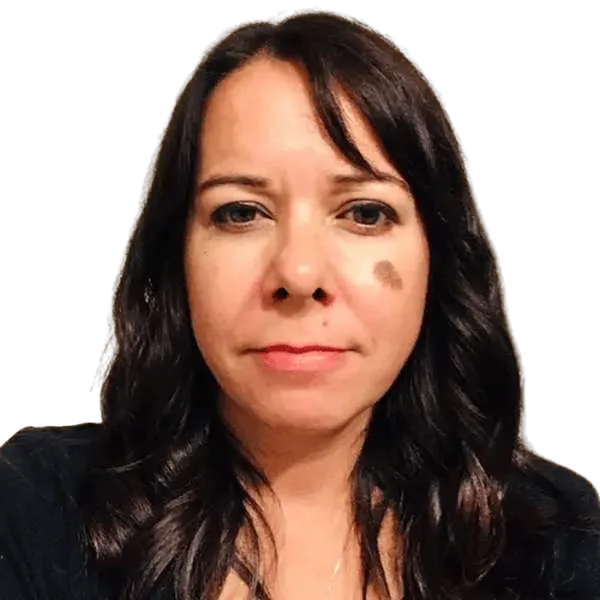National Debt Relief: Legit But Costly, Can Damage Credit

- Minimum debt
- $7,500
- Typical turnaround
- 12 to 48 months
- Fees
- Up to 25%
Our verdict
Debt settlement provider with a solid reputation, but it’s still risky.
National Debt Relief (NDR) offers debt settlement services and aims to settle your debts for less than you owe. It says you could be debt-free in as little as 12 months and never charges any fees until each debt is settled. It's also very transparent about what it does, which is refreshing in this space. But the process can be harmful to your credit, it doesn’t come cheap and there’s no guarantee your creditors will be willing to negotiate.
Best for: People in debt facing bankruptcy as their only other option.
Pros
-
Available in 31 states
-
Debt-free in as fast as 12 months
Cons
-
Rates are typically 25%
-
Not available in 19 states
-
No guarantee on how much you can save
Is National Debt Relief legit?
Founded in 2009, National Debt Relief is a legitimate debt settlement provider with thousands of positive reviews. It’s also accredited by respected organizations, such as the International Association of Professional Debt Arbitration (IAPDA) and the American Association for Debt Resolution (AADR). To date, it’s helped more than 1.2 million people on the path to financial freedom.
What makes National Debt Relief shine?
If you’re on the verge of bankruptcy, enrolling in a debt settlement program with National Debt Relief could be a better move. It’ll help you come up with a manageable monthly payment and attempt to settle your debts for less than you owe. And there’s no upfront fees — if creditors refuse to settle, you don’t get charged.
Where National Debt Relief falls short
Similar to other debt relief companies, the process isn’t cheap, with fees up to 25% of your enrolled debt. Plus, when you stop making your debt payments, you’ll incur late fees, interest continues to accrue and your credit score will drop.
And National Debt Relief, or any other debt settlement firm, can’t guarantee that your creditors will settle or that they won’t sue. In fact, some customers report finding themselves in a worse financial position than before.
How much can I save?
Clients who stick with the program and settle their debt see an approximate savings of 45% before fees, or 20% including fees, according to the National Debt Relief website. However, there is no guarantee that your creditors will be willing to settle your debts for less than you owe.
How much does it cost?
National Debt Relief says it charges 15% to 25% of your total enrolled debt, and the fee varies by state and how much you owe. For example, if you have $50,000 in debt, your fee would be between $7,500 and $12,500. But based on the examples it gives of how much you can save, along with independent customer reviews, you may want to assume a 25% fee.
Will National Debt Relief hurt my credit?
Because National Debt Relief requires you to stop making monthly payments on enrolled debt until the company can reach a settlement, these debts are marked as delinquent on your credit report and your credit score will likely take a hit. Missed payments can remain on your credit report for up to seven years.
National Debt Relief details
| Free quote or consultation | Yes |
| Services | Debt negotiation and settlements |
| Minimum Debt | $7,500 |
| Average turnaround | 12 to 48 months |
| Fees | Up to 25% |
| Types of debt | Unsecured credit cards, medical bills, personal loans, lines of credit, collections, repossessions, business debts, some private student loans. |
| Accreditations | AADR, IAPDA, BBB |
| Direct or third-party negotiations | Direct |
| State availability | Available in: Alaska, Arizona, Arkansas, California, Colorado, Delaware, District of Columbia, Florida, Idaho, Indiana, Kentucky, Louisiana, Maryland, Massachusetts, Michigan, Minnesota, Mississippi, Missouri, Montana, Nebraska, Nevada, New Mexico, New York, Oklahoma, Pennsylvania, South Dakota, Tennessee, Texas, Utah, Virginia, Washington |
Before you sign up with a debt relief company
Debt relief companies typically charge a percentage of a customer’s debt or a monthly program fee for their services. And not all companies are transparent about these costs or drawbacks that can negatively affect your credit score. Depending on the company you work with, you might pay other fees for third-party settlement services or setting up new accounts, which can leave you in a worse situation than when you signed up.
Consider alternatives before signing up with a debt relief company:
- Payment extensions. Companies you owe may be willing to extend your payment due date or put you on a longer payment plan if you ask.
- Nonprofit credit counseling. Look for free debt-management help from nonprofit organizations like the National Foundation for Credit Counseling.
- Debt settlement. If you can manage to pay a portion of the bill, offer the collection agency a one-time payment as a settlement. Collection agencies are often willing to accept a lower payment on your debt to close the account.
National Debt Relief contact info
| Phone number | 800-300-9550 |
| Customer service hours | Weekdays: 8 a.m. to midnight ET Saturday: 8 a.m. to 11 p.m. ET Sunday: 8 a.m. to 10 p.m. ET |
| info@nationaldebtrelief.com | |
| X, formerly Twitter | @NtlDebtRelief |
| National Debt Relief |
How to qualify for National Debt Relief
Here’s what you need to qualify for National Debt Relief.
- Have at least $7,500 in debt
- Have unsecured debts
- Live in a state where NDR operates
How the debt settlement process works
This is how NDR describes the debt settlement process:
- Set up a free initial consultation.
- Make payments to a dedicated savings account instead of your creditors.
- As your balance grows, National Debt Relief will attempt to negotiate settlements with your creditors.
- If you agree to the settlements, NDR will pay creditors from your account and take its own fees.
How National Debt Relief compares to other providers
What is the Finder Score?
The Finder Score crunches 6+ types of personal loans across 50+ lenders. It takes into account the product's interest rate, fees and features, as well as the type of loan eg investor, variable, fixed rate - this gives you a simple score out of 10.
National Debt Relief reviews and complaints
| BBB accredited | Yes |
|---|---|
| BBB rating | A+ |
| BBB customer reviews | 4.73 out of 5 stars, based on 4150 customer reviews |
| Trustpilot Score | 4.7 out of 5 stars, based on 42,755 customer reviews. |
| Customer reviews verified as of | 08 September 2025 |
National Debt Relief has overall good customer reviews on reputable websites like Trustpilot and the Better Business Bureau (BBB). Many users praise the company for patient and knowledgeable customer service and open communication. Others are pleased with coming up with a manageable monthly payment and help on the path to a debt-free financial future.
But some customers complain that the process takes longer than expected and the fees are expensive. A few people also say the process has led to them being sued by creditors or left in a worse financial position than where they started.
What do people on Reddit say?
Risks to debt settlement
Consider these key risks before signing up for debt settlement.
- More debt. Once you stop making payments, you’ll continue to incur interest and late fees, adding to your debt.
- Potential lawsuits. Creditors may decide to sue you rather than negotiate.
- Credit damage. Missed payments are reported to credit bureaus, causing your score to drop — sometimes dramatically.
- Income taxes. The money you save by settling is considered taxable income.
- No guarantee. Some or all of your creditors may not agree to settle, leaving you worse off than before.
Frequently asked questions
Your reviews
Lacey Finder
Writer
You are about to post a question on finder.com:
- Do not enter personal information (eg. surname, phone number, bank details) as your question will be made public
- finder.com is a financial comparison and information service, not a bank or product provider
- We cannot provide you with personal advice or recommendations
- Your answer might already be waiting – check previous questions below to see if yours has already been asked
Finder only provides general advice and factual information, so consider your own circumstances, or seek advice before you decide to act on our content. By submitting a question, you're accepting our finder.com Terms of Use and Privacy and Cookies Policy.
This site is protected by reCAPTCHA and the Privacy Policy and Terms of Service apply.
nikkiangco
May 01, 2019
Hi Jackie,
Thanks for reaching out to Finder!
It’s helpful to know that if you want to settle your credit card debt, you can’t keep using your credit card. If you decide to stop making credit card payments, your creditor usually closes your account.
Hope this clarifies!
Cheers,
Nikki
Show more Show less
Linda
July 12, 2018
I have no income what is the best way to get debt relief?
Jhezelyn Finder
July 19, 2018
Hello Linda,
Thank you for your comment.
There are two principal debt-relief options: debt settlement and bankruptcy. Both of these methods of debt relief will affect your credit score. Getting a debt consolidation loan or using a credit counseling service, might be one of your options as well.
I am sorry to hear about you having no income. You may refer to the steps below on how to deal with debt without an income:
– Create a Survival Budget
– Prioritize Your Debts
– Negotiate With Your Creditors
– Explore Other Sources of Income or find a temporary work
– Available public assistance programs may help
– Debt Consolidation
– Debt Settlement
You may want to check our list of debt relief companies.
Regards,
Jhezelyn
Show more Show less

Jackie
April 30, 2019
If decide to enroll in a debt settlement plan, can I keep one credit card active and make payments to avoid not having a credit card open for such things as rental car or hotel stay where credit card is mandatory?